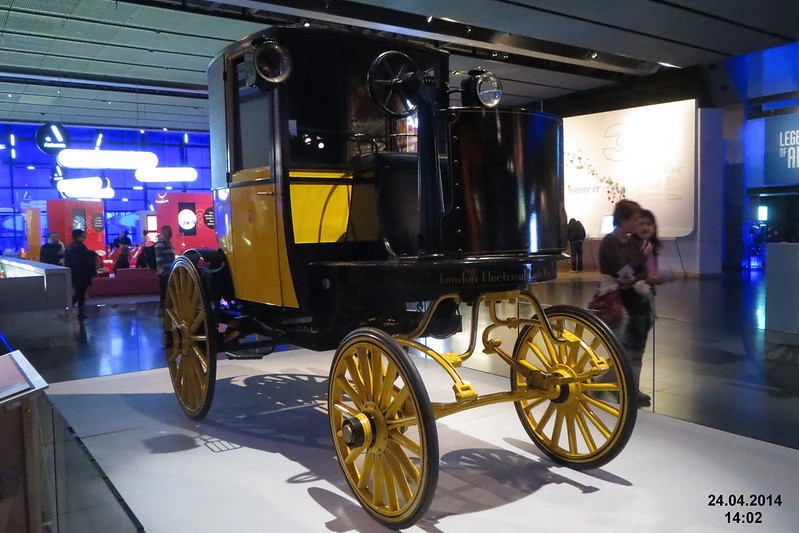Today in 1897 is said to be the day that London first licensed motor vehicles as taxicabs, though there’s evidence that they were actually in operation as early as August.
Nonetheless, it was a pretty momentous occasion, helping to move from a bustling city of horses and carriages to a bustling city full of horseless carriages.
A man called Walter Bersey had designed a taxicab that ran on electric batteries.
He’d even designed them so that the batteries could be removed and replaced in minutes at one of his facilities.
Bersey’s black and gold cabs could hold two passengers, they had a top speed of about 11 miles per hour, and even had electric lighting on the inside.
He called them Berseys at first, but the public was fascinated by the humming noise the electric engine made, and nicknamed them hummingbirds.
Bersey had dozens of hummingbirds on the streets of London.
He talked about his cars a lot like how enthusiasts describe EVs today.
They were cleaner, safer and more reliable than gas-powered vehicles (or horses, for that matter).
But they weren’t perfect.
For one thing, Bersey’s company was generating all of the electricity the cars used, which was a huge added cost.
For another, the cars didn’t hold up well under heavy use.
Especially the tires: they weren’t really able to support the full weight of the vehicles, so they wore out often.
And any time there was a problem with a hummingbird, there was a story about it in the newspapers, which generally supported the horse-drawn cabs.
Just a few years after they appeared, the Bersey cars left London’s streets.
But eventually gas-powered cars showed up in big numbers, and London became famous for its black cabs and their drivers, who spent years memorizing the locations of thousands of streets and landmarks to even get a chance to drive.
It was known as The Knowledge.
But Bersey isn’t completely forgotten today.
In fact, one of his advertisements made a point that you hear today in electric vehicle circles: in a city, where you have lots of people packed into a space, “there is no doubt that electricity will be the most advantageous.”
Today in 1945 Sergeant John Gonsalves of the stationed in Germany with the US 2nd Armed Division, wrote a letter back home to his mother in Massachusetts.
Sometimes letters from soldiers overseas took a while to get back to the States, but this one more than most.
It was delivered not to Gonsalves’ mother but to his wife on December 9, 2021 – 76 years after it was mailed.
So maybe don’t hold off on sending those holiday cards this year.
THE SURPRISINGLY OLD STORY OF LONDON’S FIRST EVER ELECTRIC TAXI (Science Museum)
Science Museum exhibits London’s 1897 electric taxi (Wired UK)
A letter from an American soldier has been delivered to his family — 76 years after he mailed it (WHDH)

